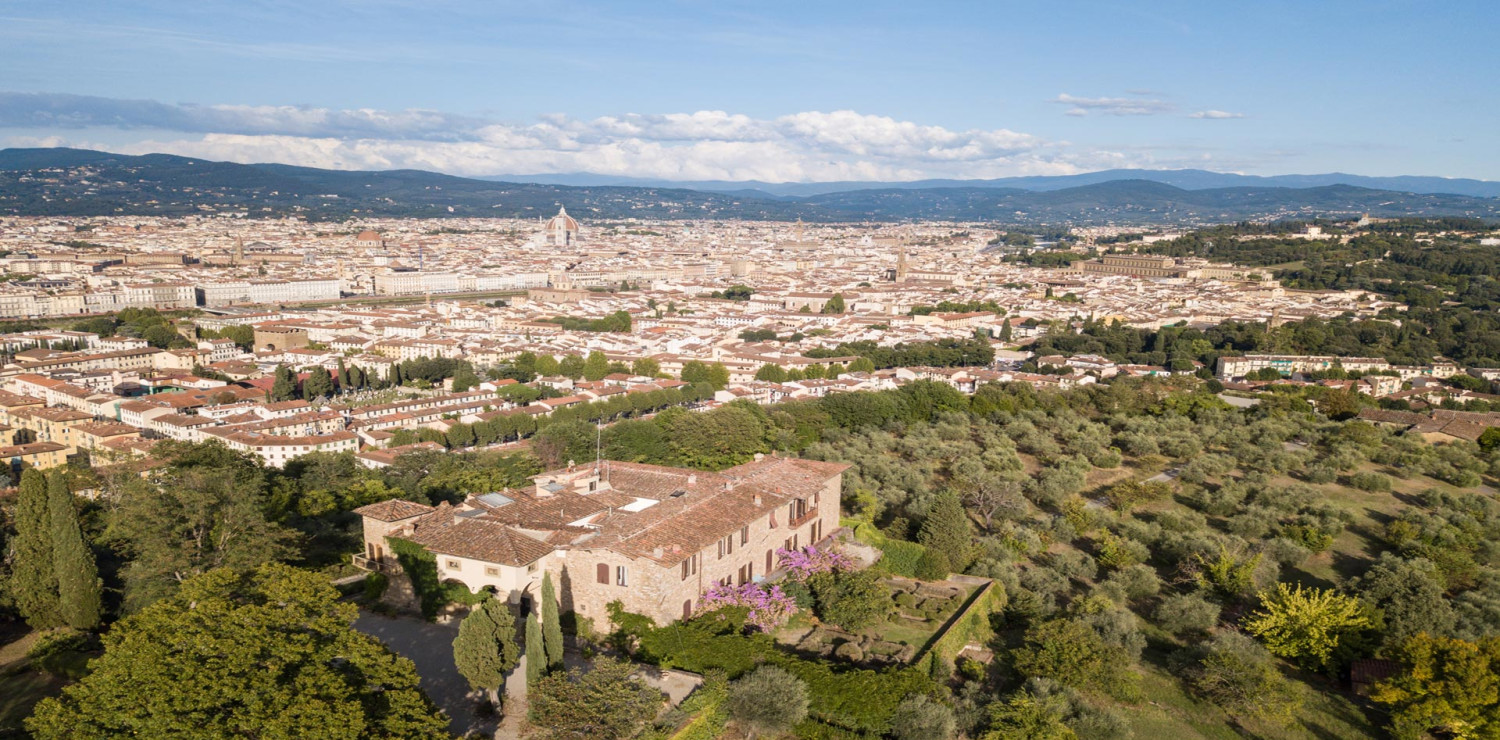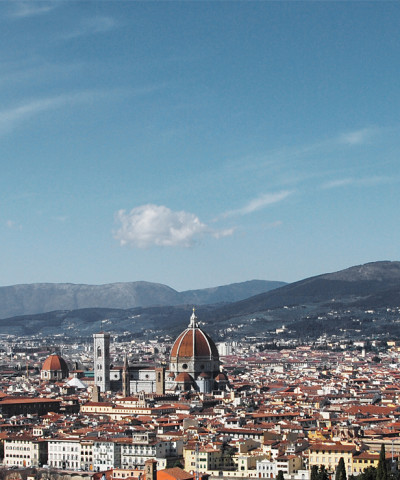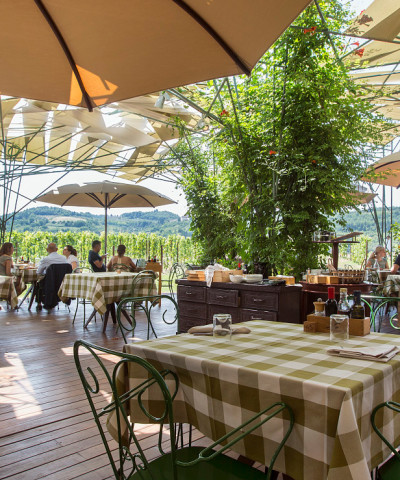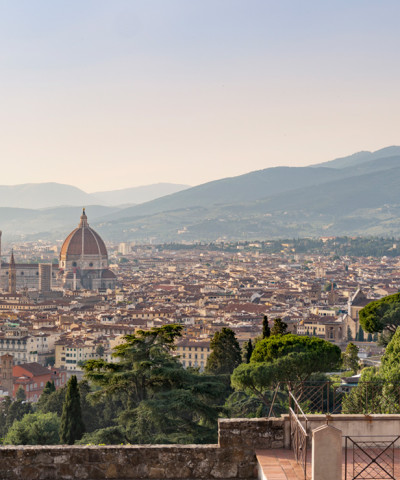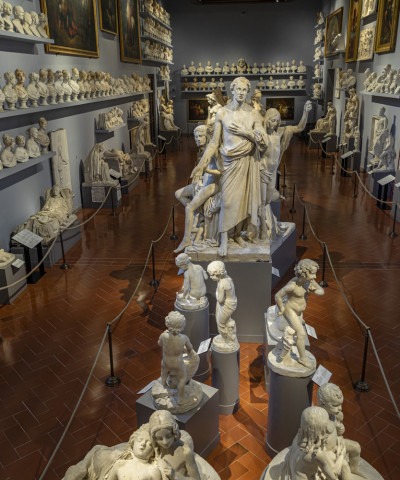The most beautiful hiking and walking routes in Florence
Hills, mountains and valleys: discover all the most beautiful itineraries in the area
97 kilometres on 18 routes along the river and through the hills, each with its own history and specific characteristics. All beautiful, sometimes unusual, scenic, rich in places of art, faith, culture. Famous places and places that are sometimes little known, because they are secluded, beyond the usual 'routes', but absolutely extraordinary and surprising.
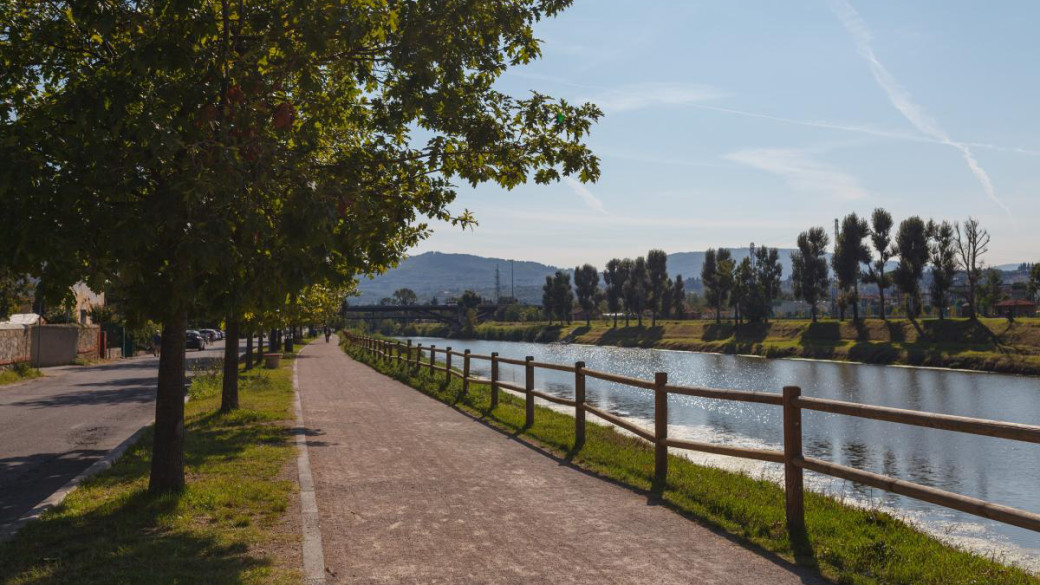 PERCORSI DEDICATI AL TREKKING A FIRENZE
PERCORSI DEDICATI AL TREKKING A FIRENZE Each with different types in terms of length, gradient, level of physical effort.
To keep walking, alone, in company, at any age, with friends, with children. We have selected some of the most unmissable.
The Viale dei Colli: a romantic and panoramic walk from the Middle Ages to Florence Capital (Length KM 2.1)
Together, Viale Michelangelo, Viale Galilei and Viale Niccolò Machiavelli make up the 'Viale dei Colli', the long and scenic promenade from Ponte San Niccolò to Porta Romana conceived and realised by Giuseppe Poggi as part of the plans for the expansion of Firenze Capitale (1865). Conceived as a romantic promenade, with infinite care for all landscape, technical, water, recreational. botanical aspects, the Viale di Colli culminates with the beautiful panoramic terrace of the Piazzale, na of the most extraordinary spatial views of the city and the surrounding hills.
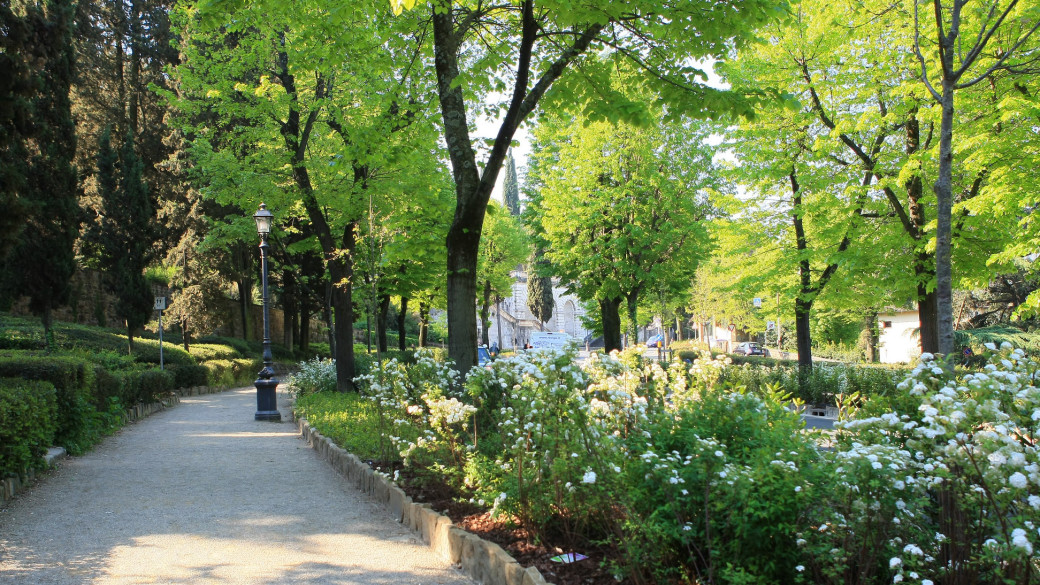 Viale dei Colli
Viale dei Colli P.za Ferrucci - V.le Michelangelo - V.le Michelangelo - V.le Galilei - P.le Galileo - V.le Machiavelli - P.le di Porta Romana - V.le Machiavelli - P.le Galileo - V.le Galilei - Via delle Porte Sante - Via del Monte alle Croci - Via di S. Miniato al Monte - V.le Michelangelo - P.za Ferrucci
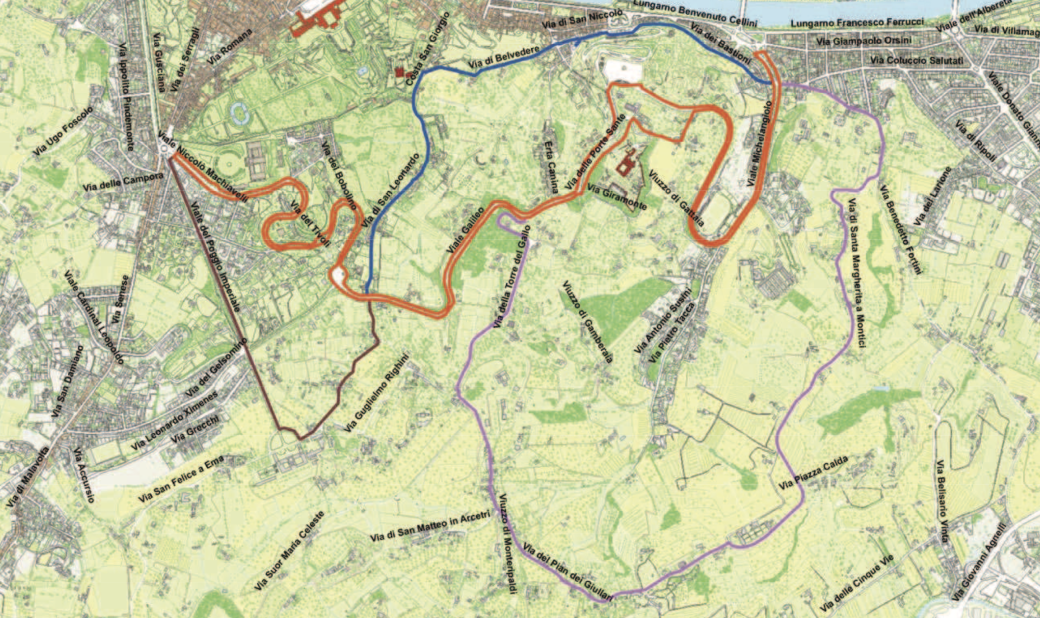 viale dei colli
viale dei colliBetween the old Parco delle Cascine and the new Parco dell'Argingrosso (Length KM 8.7)
The route, which is entirely flat (there are only two changes in gradient, at the height of the bridges crossing the Arno), takes place for the most part within pedestrian areas, in the Cascine and Argingrosso parks on a regular road surface (beaten earth and, in places, asphalt).
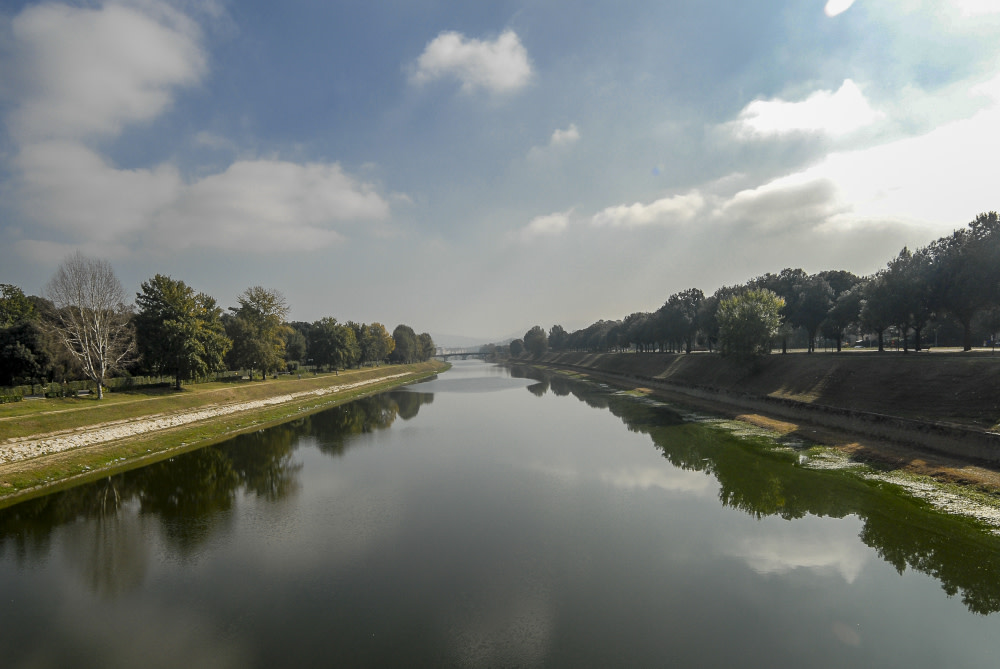 parco delle cascine
parco delle cascinePiazzaletto dell'Indiano - V.le dell'Aeronautica - Via del Galoppatoio dei Barberi - V.le del Pegaso - Prato del Quercione - P.le Kennedy - Via della Piramide - Via della Catena - V.le Stendhal - V.le degli Olmi - P.za Vittorio Veneto - V. le Lincoln - Ponte nuovo della tramvia - Via Baccio Bandinelli - L.no dei Pioppi - Via dell'Isolotto - Podere S. Leopoldo - Via Gubbio - Via dell'Argingrosso (raised embankment) - Via delle Isole - Via dell'Isolotto - Ponte all'Indiano (pedestrian crossing).
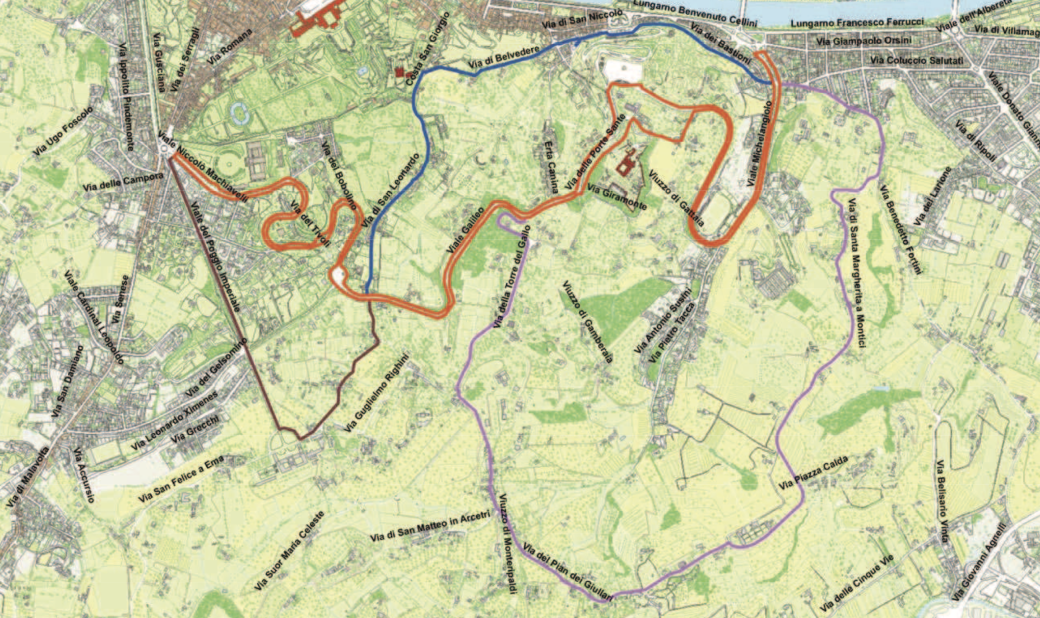 parchi delle Cascine e dell’Argingrosso
parchi delle Cascine e dell’ArgingrossoTowards Bellosguardo: the hill beloved of artists and poets (Length KM 4.8)
This route offers the opportunity to cross and get to know one of the Oltrarno hills closest to the city centre. Through the typical narrow streets enclosed by walls that climb up the ridge, one can enjoy not only beautiful, but also unusual views of Florence. Unusual because the type of orientation and exposure of the hill allows another point of view on buildings, monuments, architecture, systems of spatial relations in the city and between the city and its territory.
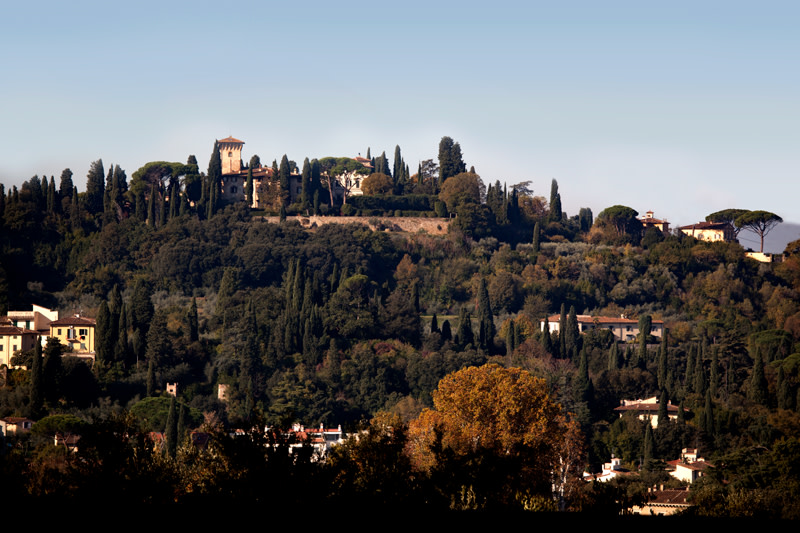 la splendida collina di bellosguardo
la splendida collina di bellosguardoVia di San Carlo - Piazzetta di Bellosguardo - Via Piana - Via Santa Maria a Marignolle - Via dei Morelli - Via del Ferrone - Via di Soffiano
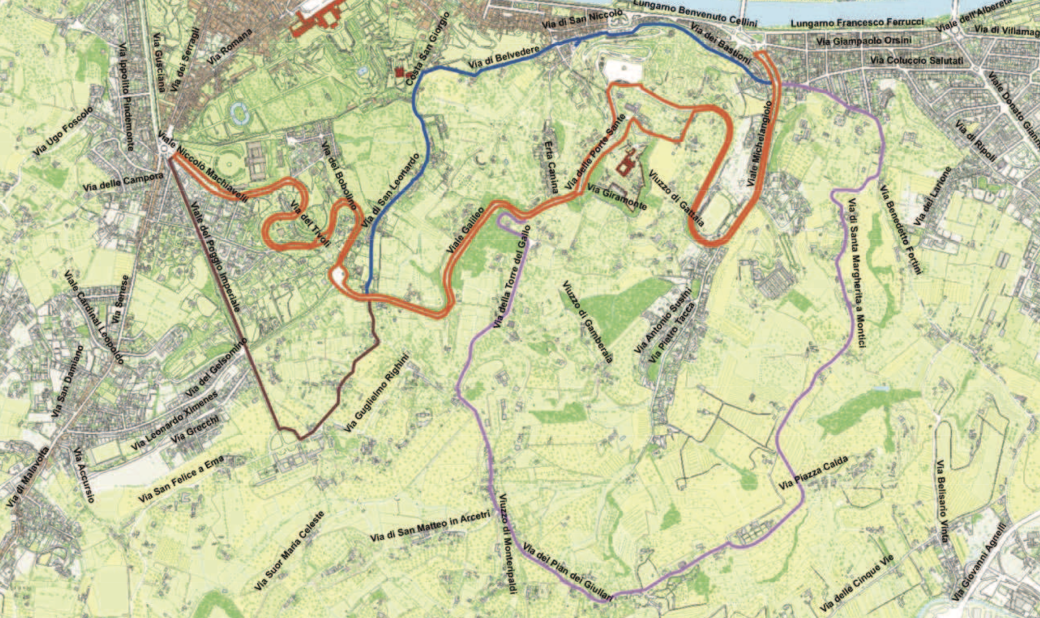 Oltrarno
OltrarnoCastle: the splendour of the Renaissance among villas and gardens (Length KM 4.8)
This itinerary presents aspects of absolute historical, artistic and landscape interest, in which the suburban villas of leisure and delight stand out for their beauty, importance and monumentality: the Medici villas of Castello and Petraia, with their marvellous Italian gardens, and those that once belonged to the Medici, such as Villa Corsini, but also Villa La Quiete alle Montalve where, from 1724, Anna Maria Luisa de' Medici, electrice Palatina, the last descendant of the family, resided. This area, partly clinging to the Quarto hill, owes its name to the ancient village of Etruscan and Roman origin over which passed the aqueduct built by Senator Marcus Opelius Macrinus (164-218) and by which water was distributed to Florence.
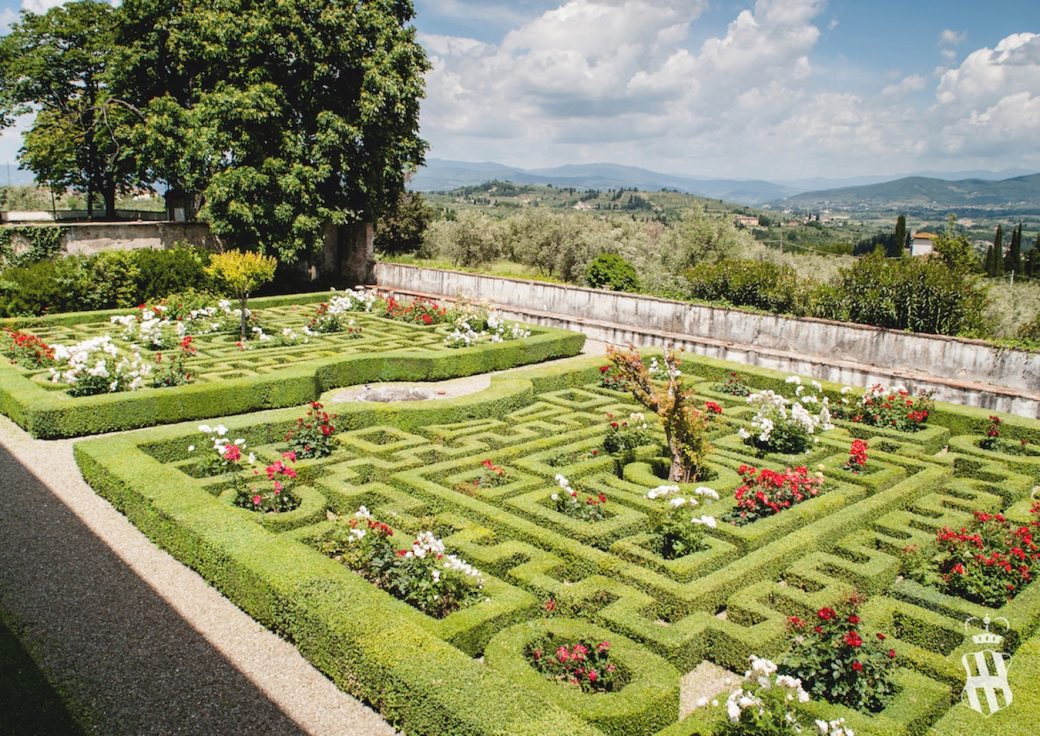 Il giardino di villa corsini a castello
Il giardino di villa corsini a castello Viottolone del Vivaio - Piazza delle Lingue d'Europa - Via Accademici della Crusca - Via di Castello - Via della Petraia - Via Giuliano Ricci - Via dell'Osservatorio - Via di Boldrone - Via della Quiete - Via Dazzi - Via del Gioiello - Via dell'Osservatorio - Via di Boldrone - Via della Petraia - Via S. Michele a Castello - Viuzzo del Gondo - Via Giovanni da San Giovanni - Via di Castello - Via degli Accademici della Crusca - Piazza delle Lingue d'Europa - Viottolone del Vivaio.
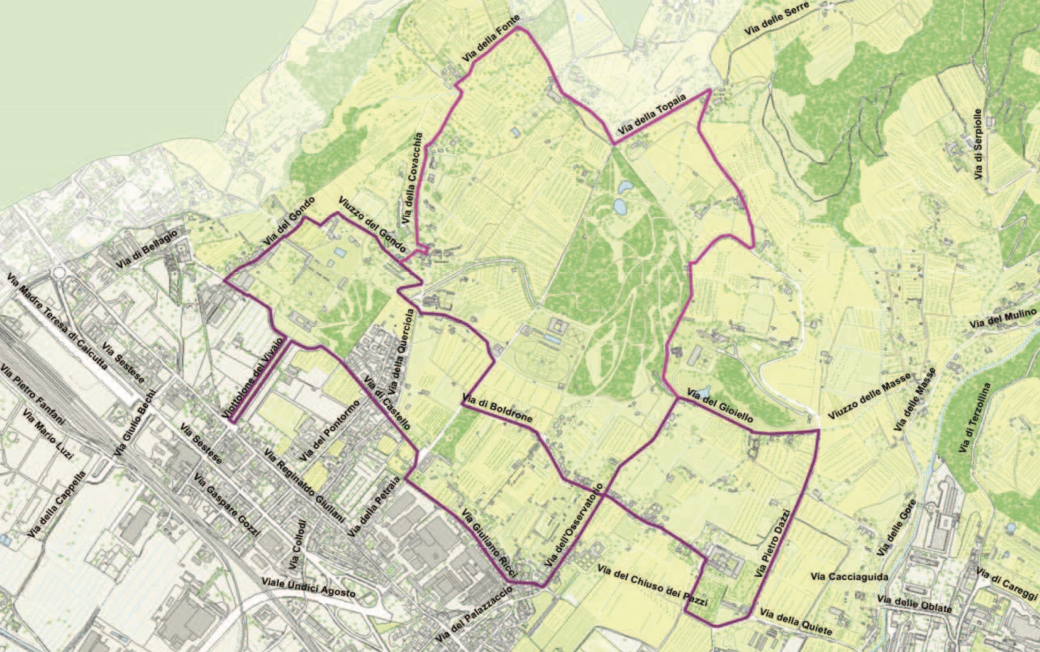 Castello
CastelloBetween Ponte a Mensola and Settignano: the beauty of the agricultural landscape, the strength of stone and the genius of art (Length KM 5.2)
Along the way are beautiful historic villas surrounded by monumental gardens (the Garden of the Villa di Gamberaia, one of the most beautiful parks in Italy, is extraordinary), ancient country houses, parish churches and oratories, the small village of Corbignano and then Settignano, which dominates the hillside. These were the birthplace, residence or sojourn not only of great Italian artists, especially sculptors and architects of the Renaissance: Desiderio da Settignano, Bernardo and Antonio Rossellino, Luca Fancelli, Bartolomeo Ammannati, Michelangelo (the nearby pietra serena quarries of Maiano and Trassinaia are one of the main reasons for this), but also Italian, English, American and other poets, writers and intellectuals (from Boccaccio to Gabriele D'Annunzio, from Niccolò Tommaseo to Leigh Hunt, Mark Twain, Charles Armitage Brown, Bernard Berenson - whose Villa - I Tatti, is today the seat of Harvard University, a prestigious centre for the history of the Italian Renaissance), attracted by the gentle, silent, beautiful landscape, special for otium, intellectual work and meditation.
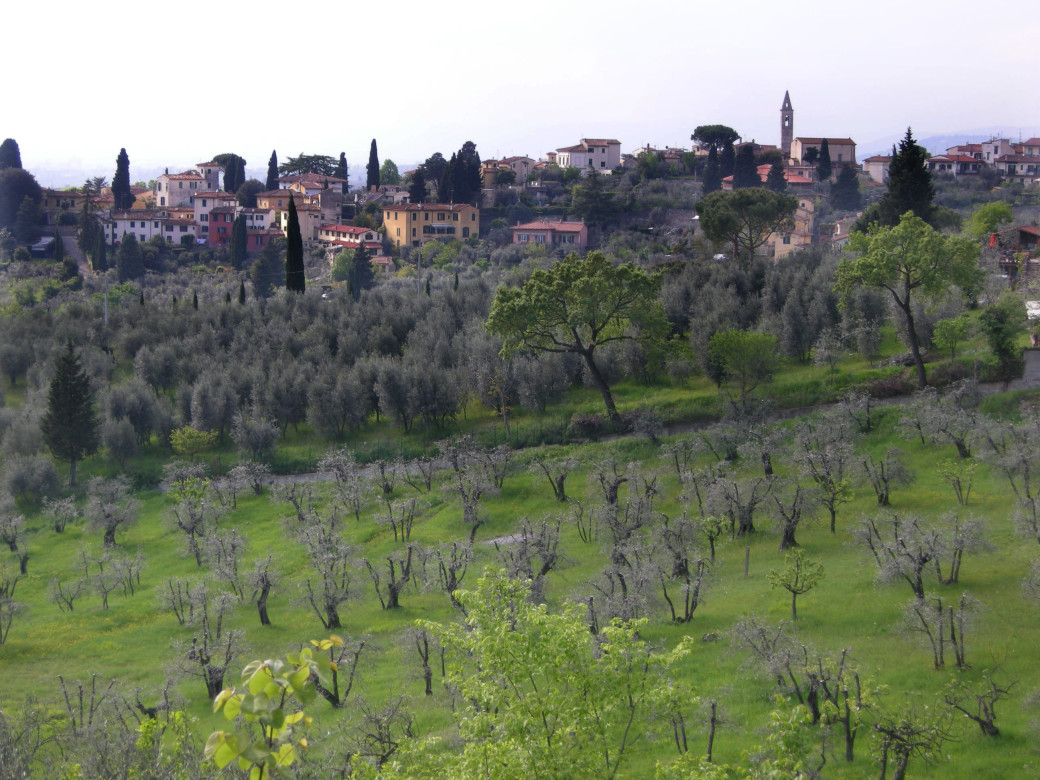 Settignano
SettignanoVia Poggio Gherardo - Via S. Martino a Mensola - Via di Vincigliata - Via di Corbignano - Via Desiderio da Settignano - Via San Romano - Via della Capponcina - Via Madonna delle Grazie - Vicinal road with footbridge over the Mensola - Via Madonna delle Grazie - Via Gabriele D'Annunzio.
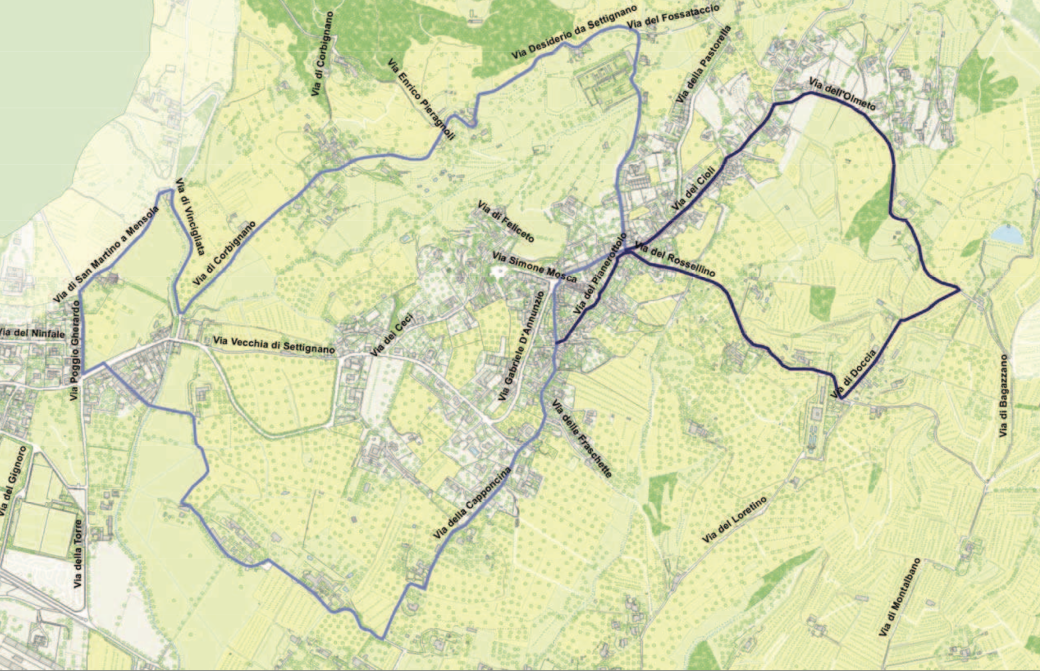 Tra Ponte a Mensola e Settignano
Tra Ponte a Mensola e Settignano





